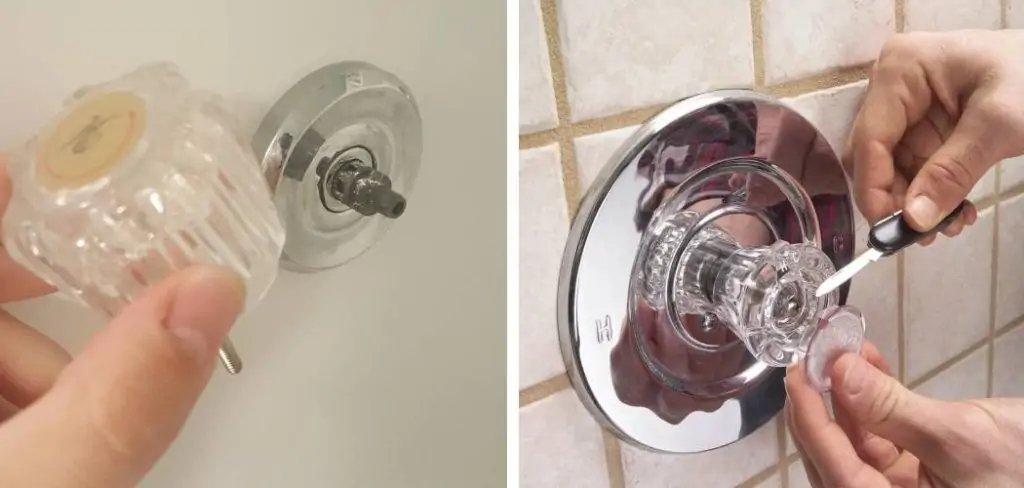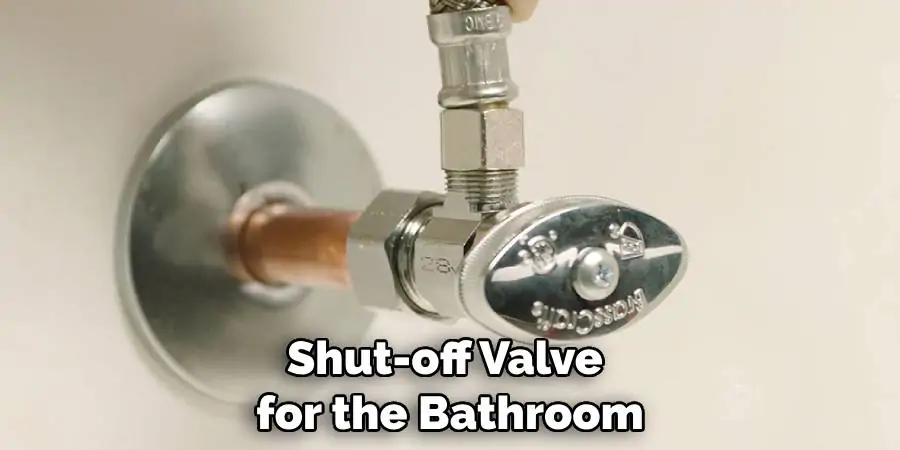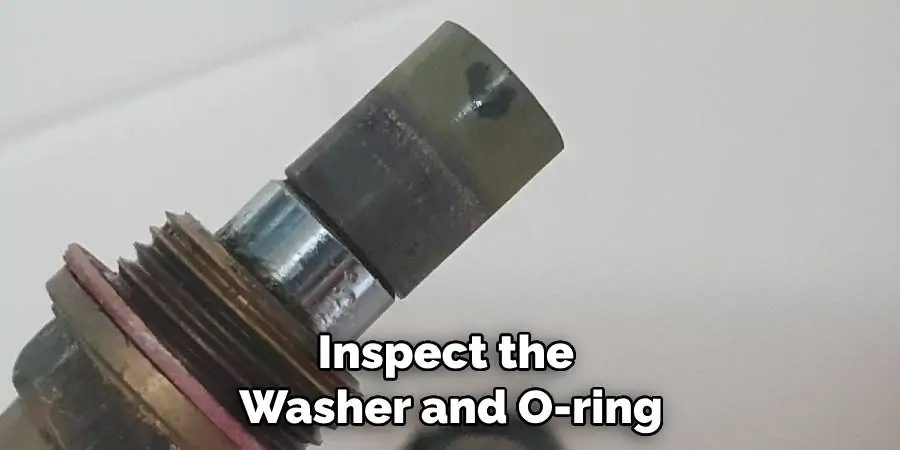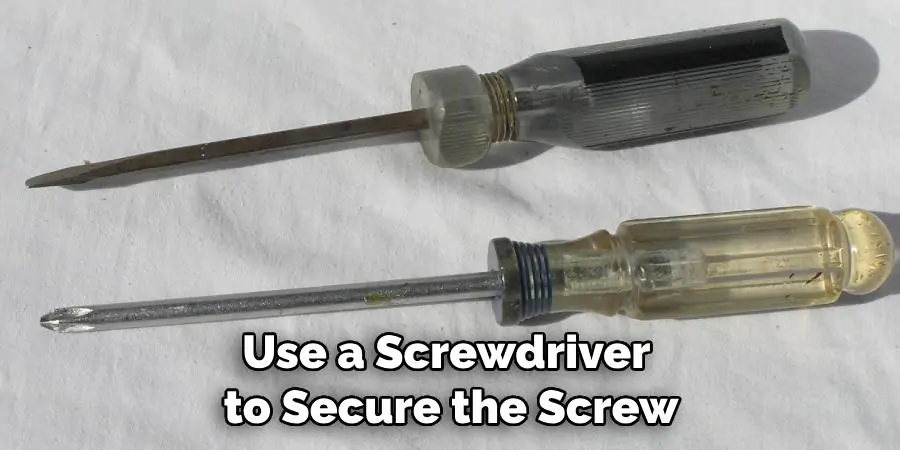No one wants to deal with a shower knob that keeps turning. It can be frustrating and inconvenient, especially when you’re in a hurry. But don’t worry, fixing a shower knob that keeps turning is not as difficult as it may seem. In this guide, we will go through the steps on how to fix a shower knob that keeps turning, ensuring that you can have a stress-free shower experience. Whether the issue stems from wear and tear or a faulty mechanism, we’ll provide you with clear and concise instructions to get your shower knob functioning properly again.

What Tools Are Needed to Fix a Spinning Shower Knob?
Before we dive into the steps, let’s first gather the necessary tools. The good news is that you won’t need any fancy or expensive equipment to fix a spinning shower knob. Here are the items you’ll need:
- Screwdriver (either flathead or Phillips head)
- Adjustable wrench
- Replacement parts (if needed)
Dealing with a shower knob that doesn’t seem to cooperate can be frustrating, especially when you’re looking forward to a relaxing shower. If your shower knob keeps turning without controlling the water flow properly, don’t despair! Here’s an easy-to-follow listicle to guide you through fixing this common bathroom annoyance.
Easy Steps on How to Fix a Shower Knob That Keeps Turning
Step 1: Turn Off the Water Supply
Before you start tinkering with the shower knob, it’s crucial to turn off the water supply. This step is essential for preventing any accidental spillage or flooding while you’re working on the repair. You can usually find the water supply valve in the bathroom or basement. Twist the valve clockwise until it’s tightly closed. If your home does not have an individual shut-off valve for the bathroom, you may need to turn off the main water supply for your entire home. After shutting off the water, turn on the shower to drain any remaining water from the pipes, ensuring a dry workspace.

Step 2: Remove the Shower Knob
Now that the water supply is safely turned off, it’s time to focus on the shower knob itself. Start by locating the decorative cap on the knob; this cap often has the hot and cold indicators on it. Gently but firmly, pry off the cap with the flathead screwdriver to expose the underlying screw. With the same screwdriver or a Phillips head, depending on the screw type, carefully remove the screw by turning it counterclockwise. Keep the screw and the cap in a safe place to ensure they don’t get lost during the process. With these parts removed, you should be able to pull the knob off the wall, revealing the valve stem behind it.
Step 3: Check the Shower Valve Stem
With the knob removed, take a close look at the valve stem. Examine it for any signs of wear or damage, such as corrosion, cracks, or a stripped thread. If the valve stem is indeed damaged, it is likely the culprit behind the knob’s continuous spinning. To remedy this, take the valve stem to your local hardware store. Ensure that you select an exact match for replacement; variations in size or type can lead to further complications. A hardware store representative can help you find the right part. Remember to bring the make and model of your shower faucet or even the old valve stem itself to ensure compatibility with your shower system.
Step 4: Replace Worn Out Parts
Check for any other components that might need replacing, such as the washer, O-ring, or any other small parts inthe mechanism. These can wear out over time, causing the knob to turn with no effect on the water flow. Inspect the washer and O-ring for any visible signs of deterioration, such as cracks, brittleness, or loss of shape, which might compromise their ability to create a water-tight seal. If these parts seem faulty, take note of their dimensions or bring them with you to the hardware store to find suitable replacements. Being proactive in replacing these small parts can prevent future leaks and improve the overall function of your shower faucet.

Step 5: Apply Plumber’s Tape
Before reassembling the knob, it’s important to prevent future leaks by ensuring a tight seal. Wrap plumber’s tape around the threads of the valve stem in a clockwise direction. This will help fill in any gaps between the threads and allow for a smoother reinstallation of the knob. Use enough tape to cover all the threads, typically three to six wraps, making sure it’s flat and secure. Once the plumber’s tape is in place, you can proceed to carefully reattach the knob to the valve stem.
Step 6: Lubricate Sticking Mechanisms
If the knob or valve stem is not turning smoothly, it may be due to corrosion or a buildup of mineral deposits. Apply a small amount of penetrating oil to the mechanism to help loosen any hard-to-move parts. Allow the oil to seep into the joints for a few minutes before attempting to turn the knob again. This lubrication can free up the movement, making it easier to adjust the water flow and temperature.
Step 7: Reassemble the Shower Knob
Begin the reassembly process by carefully aligning the O-ring and the new washer with the valve stem, ensuring they sit flush and securely in place. Next, guide the knob over the stem, confirming that the components are properly oriented. If your knob has any specific alignment features, such as notches or grooves, make sure they match up with the corresponding parts on the faucet assembly. Tighten the knob by hand initially, and then use a screwdriver to secure the screw or fastener. Do not overtighten, as this could damage the new components. Once the knob is secure, gently turn it to test the action and ensure smooth operation.

Step 8: Test the Knob
With the shower knob reassembled, it’s time to carefully restore the water supply. Turn the water valve back on slowly to avoid any sudden pressure surges. Begin with a gentle quarter turn, listen for the flow of water, and proceed with gradual increments until the supply is fully open. Now, test the functionality of the shower knob. It should provide a steady and responsive control over the water flow, transitioning smoothly from off to full without any slipping or endless turning. If adjustments are needed, shut the water supply off again before making any further alterations.
Step 9: Consult a Professional if Needed
If after following these steps you’re still facing issues with your shower knob, or if you suspect the problem may extend beyond basic wear and tear, it is advisable to consult with a professional plumber. An experienced technician will have the tools and expertise to diagnose the issue accurately and will ensure that any underlying problems are addressed comprehensively. Tampering further without the right knowledge could lead to more extensive damage and costly repairs, so seeking professional assistance can be both a time-saving and cost-effective approach.
By following these steps, you can fix a pesky shower knob that keeps turning and regain a stress-free shower experience. Remember, sometimes the fix might be simple, but other times it could be indicative of a larger issue. Don’t hesitate to seek professional help if you’re unsure about any step of the process.

Frequently Asked Questions
Why Does My Shower Knob Keep Turning?
Have you ever stepped into your shower, ready for a comforting cascade of warm water, only to find yourself wrestling with a rebellious shower knob that keeps turning without any traction? It’s a common household nuisance that you’re certainly not alone in encountering. But fear not, brave bather: understanding the ‘whys’ and arming yourself with the ‘hows’ can turn this slippery situation into nothing more than a memory.
Before you reach for the phone to call a plumber, let’s explore the simple fixes that can restore your shower knob to its former glory. From worn-out O-rings to stripped valve stems, a little know-how can save the day—and your shower routine. So grab your toolbox, because it’s time to delve into the satisfying realm of DIY and learn how to fix a shower knob that keeps turning.
What to Do if Shower Knob Won T Turn Off?
If your shower knob won’t turn off, it’s typically due to a malfunction within the valve that controls the flow of water. The first step is to shut off the water supply to prevent a continuous flow that can cause water damage and increase your utility bills. Once the water supply is halted, you can disassemble the handle and inspect the valve. Look for signs of damage or wear on the rubber gaskets or O-rings.
If these parts appear damaged, replacing them can often solve the issue. If the problem persists even after replacing worn parts, it may be necessary to replace the entire valve assembly. As always, if you are not comfortable performing these tasks, contact a professional plumber to handle the repair safely and effectively.
How Do You Tighten a Loose Shower Knob?
To tighten a loose shower knob, begin by shutting off the water supply to your shower to prevent any potential water spillage or damage. Next, remove the decorative cap on the knob to reveal the underlying screw. Use a screwdriver to tighten the screw, being careful not to over-tighten it as this can cause damage to the knob or stem. If the knob continues to feel loose, the issue may lie with the stem or handle’s internal components and may require replacing or tightening the valve stem securing nut. If you’re unfamiliar with these parts or the process, it’s wise to consult a professional to ensure the job is done correctly and to avoid causing further damage.

Conclusion
In this guide, we’ve discussed about how to fix a shower knob that keeps turning, including the potential causes and solutions. Whether it’s a stuck or loose shower knob, these issues can be resolved with some basic tools and knowledge. It’s important to always shut off the water supply before attempting any repairs and to seek professional help if you are unsure or uncomfortable performing the tasks yourself. By following these steps, you can regain control of your shower and ensure it functions properly for your daily use.
Keep in mind that regular maintenance and inspections can prevent these issues from occurring in the first place, saving you time and money on costly repairs. As with any home repair, safety should always be a top priority. With the proper care and attention, your shower knob can continue to function effectively for years to come. We hope this guide has been helpful and informative in resolving any shower knob issues you may encounter. Happy showering!
